Weekly birding round-up: 18 - 24 July 2025
This week we simply had to accept the reality of the situation – the third week of July isn’t, traditionally, a richly endowed one for rarities of any hue and, despite us becoming recently used to almost every week of the year delivering something startling somewhere in Britain and Ireland, that’s not always going to be the case. Sometimes precedence and circumstance won’t be gainsaid. It was a quiet week, the one just gone.
With around 100 Wilson’s Petrel logged this past week, numbers recorded were notably down on the week that went before. Still, that’s an awful lot of Wilson’s, and nobody’s day was ever made worse by one or more them. The Scilly pelagics continued to make hay over the horizon, with a peak count of 35 birds on 20th. The best of the land-based counts was seven seen from Pendeen (Cornwall) on 21st.
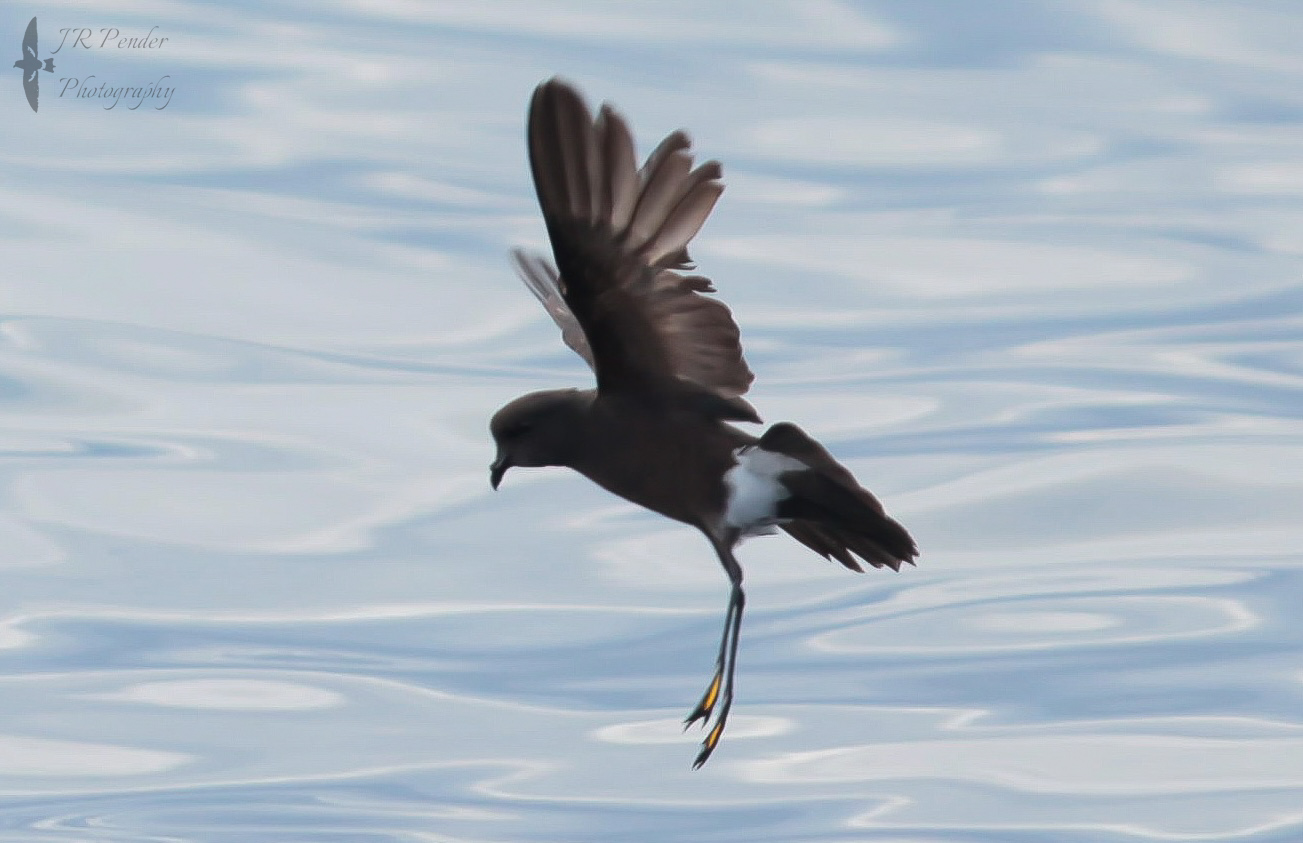
A Leach’s Petrel was trapped and ringed on Orkney Mainland at Birsay on 22nd.
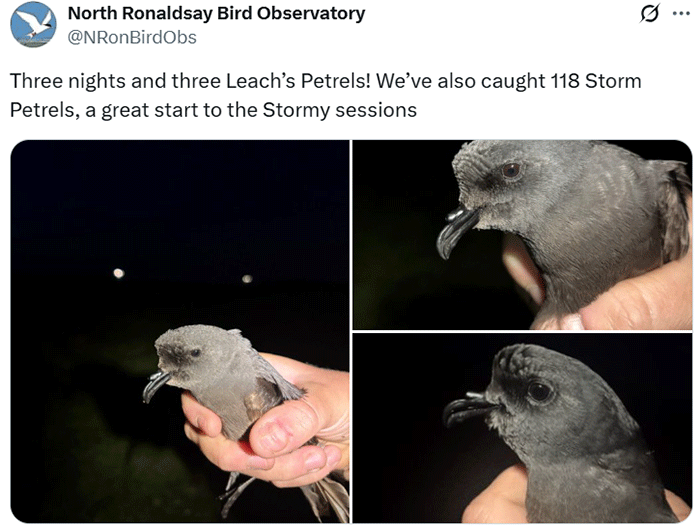
After the drama of the prior week’s Soft-plumaged Petrel off the Cornish coast, small wonder eyes were gazing yearningly out to sea with renewed vigour. A Fea’s Petrel sp was seen from Porthgwarra on 20th; and Pendeen on 21st. A probable was seen in the morning of 22nd from Chynhall’s Point.
Numbers of Cory’s Shearwater were subdued once more, with a little over 50 noted during the week, the best counts coming from the Scilly pelagics – 15 logged on 20th, and 20 on 22nd.
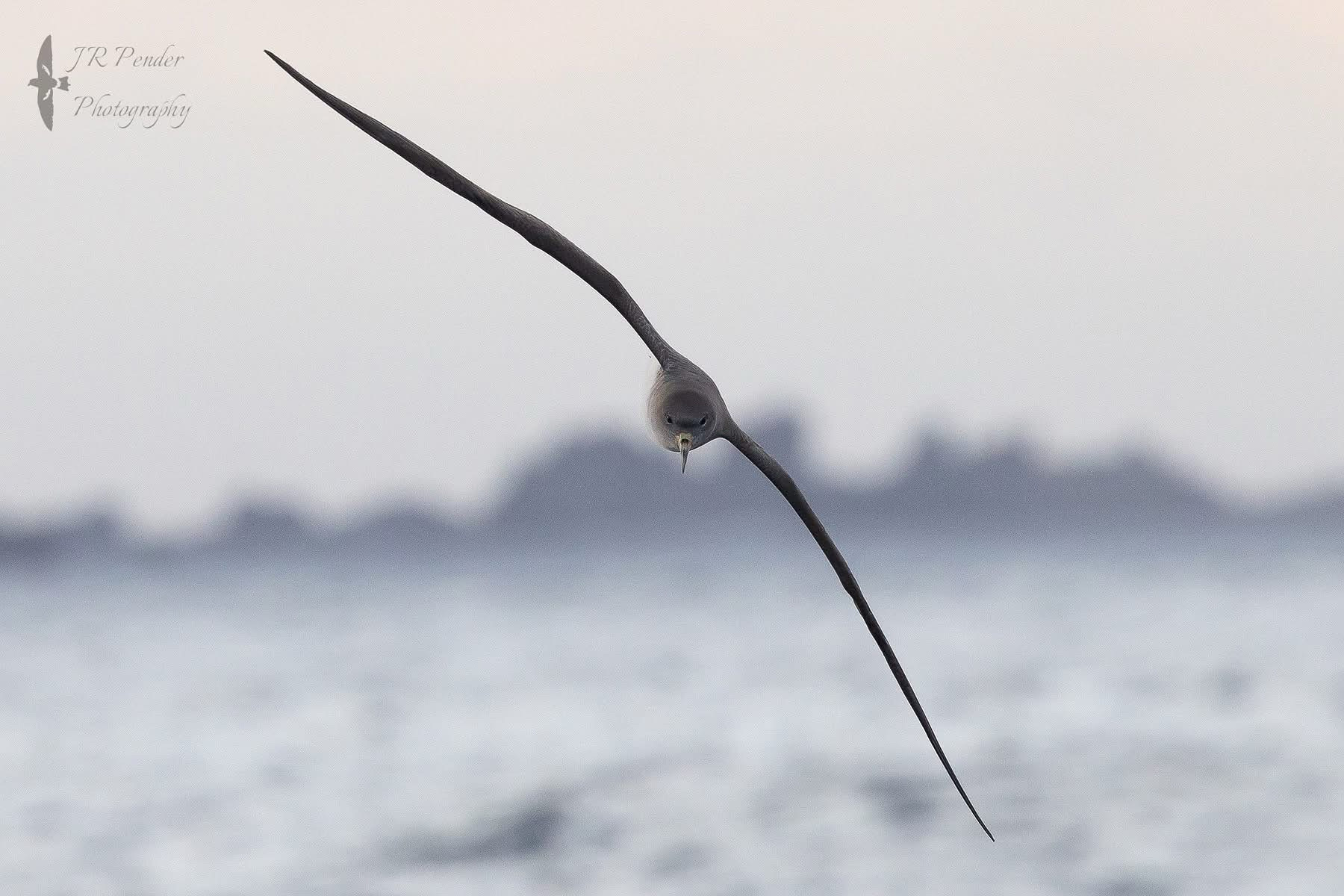
Great Shearwater remained for now almost an afterthought. Not for long, one suspects… This week Pendeen (Cornwall) had a singleton on 20th, and two on 21st; single birds were seen from the Scillonian on 21st and 22nd; and the Scilly pelagics enjoyed one on 18th, two on 20th, and one on 22nd.
Numbers of Balearic Shearwater on the other hand were very much on the ascendant, thanks in large part to Devon – of the 2,500 or so birds seen this past week, the highest count came from a pelagic at sea off Brixham on 24th, where 1,920 (and a Wilson’s Petrel) were logged.
Of the skuas, the recent Pomarine Skua remained at Arbroath (Angus) on 18th-19th, while further sightings of a single bird came on 19th from Kent at Herne Bay, Foreness Point, and North Foreland.
Single Long-tailed Skua were seen on 19th at Porthgwarra (Cornwall), and on 22nd at Chynhall’s Point (Cornwall). On 24th further singletons were noted at Huttoft Bank (Lincolnshire), and Winterton Dunes (Norfolk).
Finally, a probable Brown Booby was reported offshore from Lewis (Western Isles) on 18th.
The long-legged beasties were a varied bunch this week. A Black Stork started the week on 18th seen circling near Ogston Reservoir (Derbyshire). On 22nd one was noted over Hollesley (Suffolk) before dropping down to Boyton Marshes RSPB for a spell in the later morning. On 23rd it flitted between Boyton Marshes RSPB and Hollesley Marshes RSPB, and was seen at Orford Ness too.
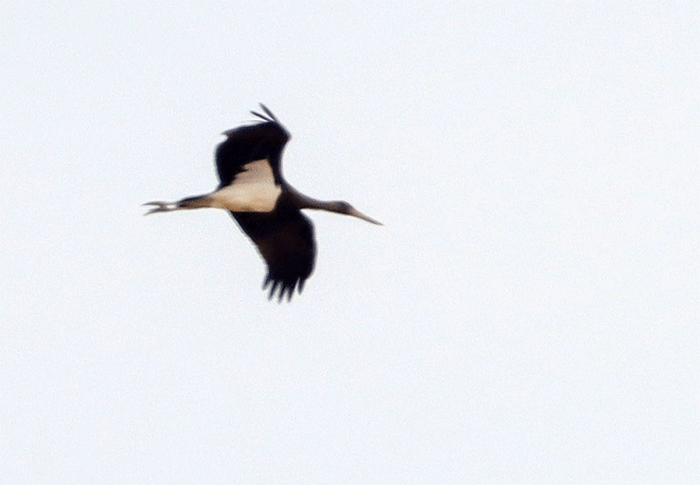
An unconfirmed report of a Little Bittern at Earls Barton (Northamptonshire) on 21st came to nothing further.
Recent Night Heron remained this week at Marden Quarry (Northumberland) on 18th-24th, at Grimley (Worcestershire) on 18th-24th, and at Rye Meads RSPB (Hertfordshire) on 19th-24th; and a further bird passed over Lewis (Western Isles) late in the evening of 21st.
In Dorset the Purple Heron remained at Little Sea on Studland on 18th-20th.
Finally, four settled Glossy Ibis continued to be reported regularly this week - at Deeping Lakes LWT (Lincolnshire) on 18th-24th; at Otmoor RSPB (Oxfordshire) on 18th-24th; at Misson (Nottinghamshire) on 18th-23rd; and at Lough Atalia (Co.Galway) on 18th-24th still.
The quiet rarity duckpond was surmounted still this week by the immature drake White-winged Scoter still at Musselburgh Lagoons (Lothian) on 18th-24th.
Also present in the Musselburgh area, the drake Surf Scoter remained to be seen off there on 18th-24th.
In Greater Manchester the Lesser Scaup remained at Audenshaw Reservoirs on 18th-23rd; an eclipse drake was at Belvide Reservoir (Staffordshire) on 23rd, joined there by a second bird on 24th; and a possible was seen at Marston Vale Millenium CP (Bedfordshire) on 21st.
An eclipse drake Ring-necked Duck was seen at Ogston Reservoir (Derbyshire) on 22nd-24th.
The drake Ferruginous Duck remained at Draycote Water (Warwickshire) on 18th-24th; while sightings from Cambridgeshire came from Colne Fen GPs and Fen Drayton Lakes RSPB on 20th again.
Waders were very much on the move this week, with a couple of species appearing on our radars anew as the days wore on.
We start in Shetland, where a fine Baird’s Sandpiper was a great find on Unst on 21st-22nd at Baltasound.
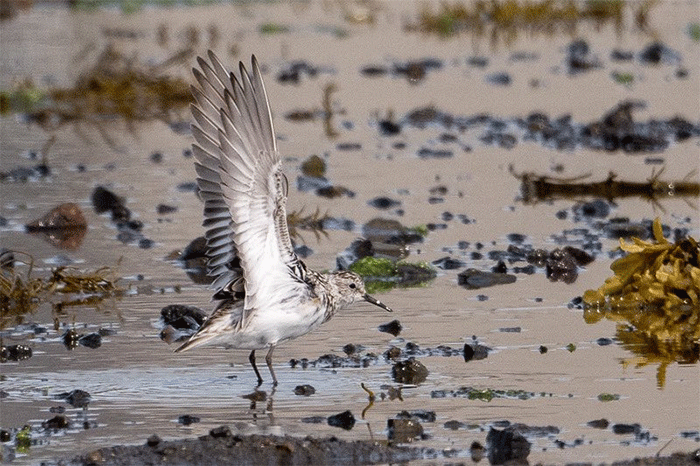
The recent White-rumped Sandpiper remained at Musselburgh Lagoons (Lothian) on 18th. One was lingering on the Humber at Spurn (East Yorkshire) on 20th-23rd, and at Beacon Ponds NR again on 24th; and another appeared in Ireland at Tacumshin (Co.Wexford) on 22nd-23rd.
Irish birders were doing okay for Nearctic waders on 22nd, for a couple of Pectoral Sandpiper also put in an appearance that day, found at Lady’s Island Lake (Co.Wexford) and Webb’s Field (Co.Wicklow), the latter remaining on 23rd, presumably the former accounting for that also seen at Lady’s Island Lake on 24th. Additional birds were found in England lately at Anderby Creek (Lincolnshire) on 21st-23rd, and Lodmoor RSPB (Dorset) on 22nd; and on 23rd at Abberton Reservoir (Essex), and Farlington Marshes HWT (Hampshire), the Essex bird remaining there the following day.
Up in Ayrshire, the steadfast Western Sandpiper remained nailed down at Maidens on 19th-22nd.
Lincolnshire landed a Temminck’s Stint at Frampton Marsh RSPB on 24th.
A Long-billed Dowitcher was present at Tacumshin (Co.Wexford) on 23rd-24th.
In Lancashire & North Merseyside the Lesser Yellowlegs remained at Leighton Moss RSPB on 18th-19th, though prone to a wander to Jenny Brown’s Point too, and here it was again on 20th.
Finally, a Grey Phalarope was seen on 23rd from the Scillonian.
For another week, Kent held onto its regular adult Bonaparte’s Gull at Oare Marshes KWT on 18th-24th.
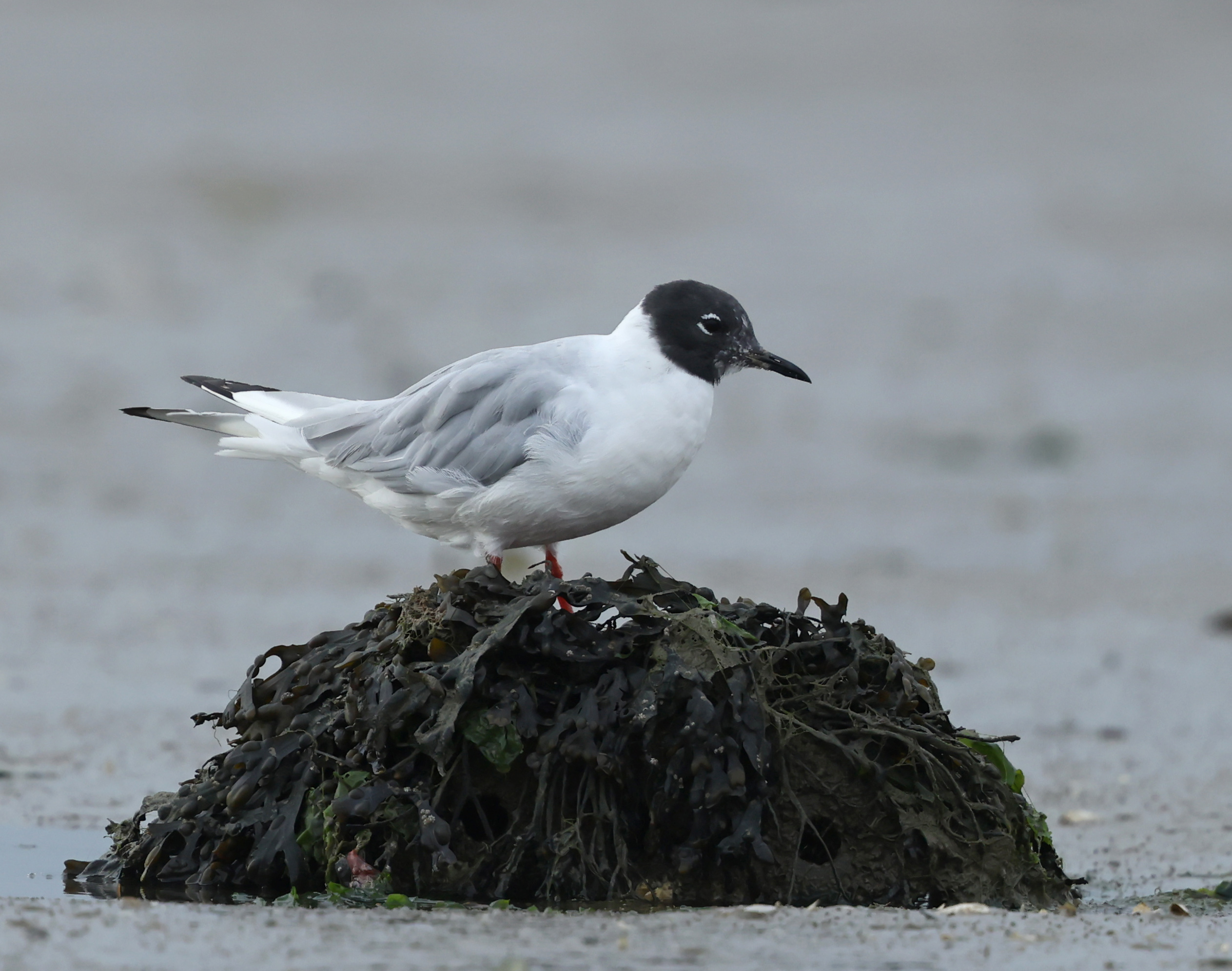
Given how the last few Laughing Gull of recent weeks have all been fleeting one-day birds, the first-summer bird found as the last week closed on 17th in Co.Kerry at Trabeg was to prove something of a tonic – it stayed there this week until 22nd.
Absent from the news for a while now, Ireland also gave us a Ring-billed Gull this week, an adult at Blennerville (Co.Kerry) on 18th.
Our only white-winger this week was a Glaucous Gull on Orkney at Stenness on 18th-21st.
A Caspian Tern was haunting the upper reaches of the Severn this week, being seen in Gloucestershire at Severn Beach on 19th; and on 22nd at Hartleton (Herefordshire) and, later in the day, in Gloucestershire again at Westbury Strand and Upper Fremilode.
Gloucestershire birders were doing well for terns on 22nd, for a White-winged Black Tern was also seen that day, at Frampton-on-Severn, remaining there the following day too; another was seen this week in Northumberland on 18th at Druridge Pools NR and East Chevington NWT; and a further sighting came on 18th at Wedholme Flow (Cumbria).
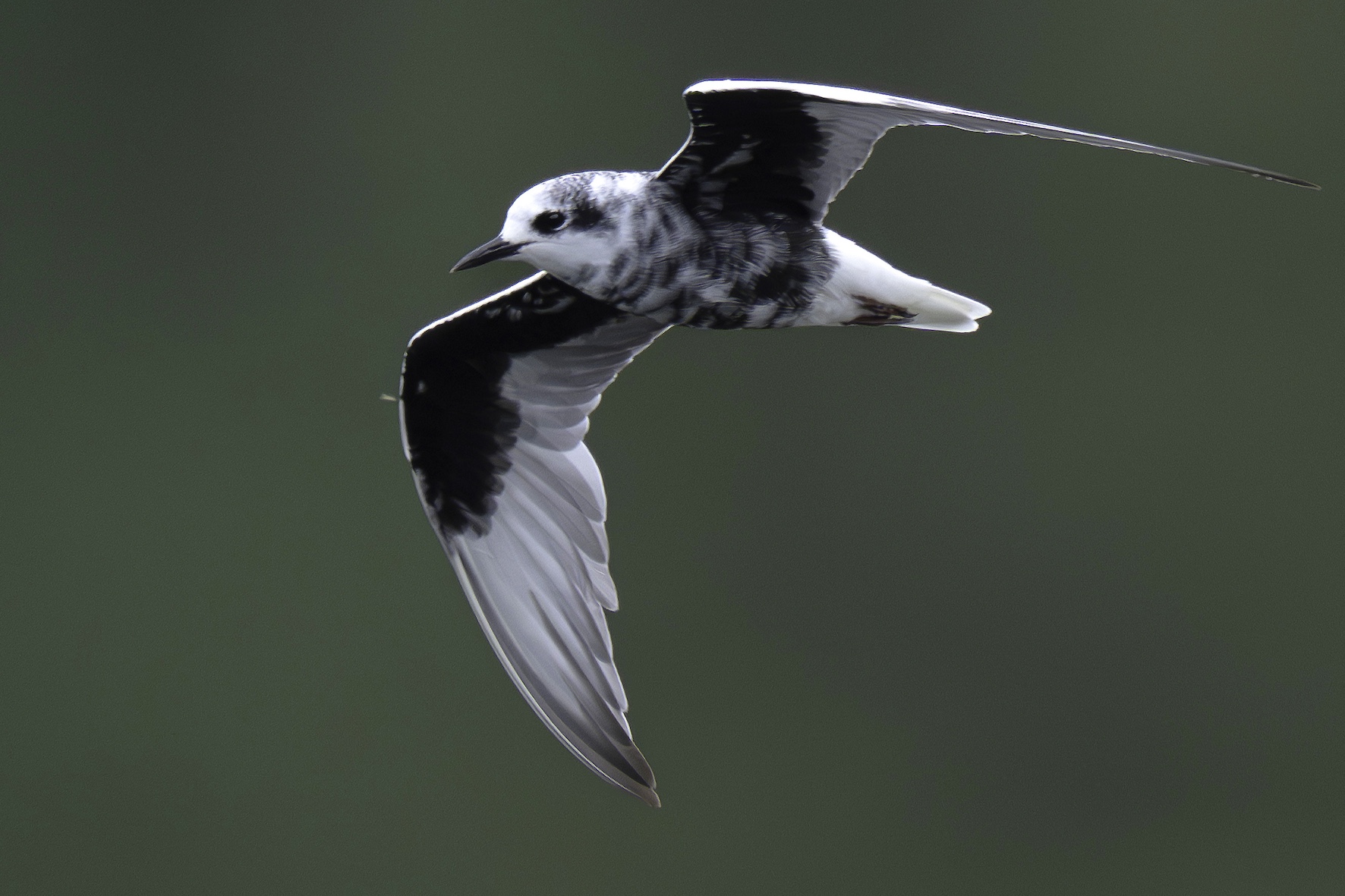
Just a ringtail Montagu’s Harrier seen at Sudbury (Suffolk) on 21st to report. That and a probable female Red-footed Falcon on 24th over Frampton-on-Severn (Gloucestershire).
…really very little to say for the passerines and their ilk either.
Cornwall supplied a few Bee-eater records this week – at Coverack on 18th, and Mullion Cove and Predannack Head on 19th. One was heard only at Cley NWT (Norfolk) on 18th; and one was seen in Kent at North Foreland on 23rd. A final bird was heard only on Portland (Dorset) on 24th.
A male Red-backed Shrike was present at Spurn (East Yorkshire) on 18th.

On Fair Isle (Shetland), the male Eastern Subalpine Warbler remained present on the island on 20th-21st.
Lastly, and into the headlines but for the lack of certainty given the gravity of the bird, an unconfirmed report of a Zitting Cisticola sitting on the fence at Marazion Marsh RSPB (Cornwall) late on 24th was intriguing… If that one firms up as the new week begins, that’ll be next week’s Round Up headlines wriging themselves.
We’ll start the overseas news just over the water in the Netherlands. Here the Pygmy Cormorant remained at Natuurpark Lelystad on 22nd, and a White-tailed Lapwing was seen near Ezumazigl on 22nd also.
In France the Bridled Tern was still at Ile aux Moutons on 19th.
Finally, Italy might be out of the Euros, but at least they’ve retained the Pacific Swift in Cornaiano on 19th-24th. And that sounds a lot like winning this summer to us.
Wader or seabird? While the coming week’s not a bad one traditionally for Two-barred Crossbill, and an early Arctic or Greenish Warbler’s been known to squeak in, the only real game in town is one of those two options.
Marsh Sandpiper boasts a seemingly irresistible 17 records alone for the last week of July, while White-rumped Sandpiper start to get silly, with dozens of past records for the period in question…
However, given the past week has featured a couple of Fea’s/Zino’s/Desertas Petrel sp off the Cornish coast, and them in the wake of Britain’s second Soft-plumaged Petrel, seawatchers in the southwest should now be feeling their antennae twitching. The anticipation both on land and at sea must be palpable.
The Scilly pelagics have some form for the coming week – a Cape Verde/Madeiran/Monteiro’s Petrel sp on 28th July 2007, and our first confirmed Zino’s Petrel on 30th July 2020. Dare we dream really big this coming week, a last roll of the dice before August is upon us?
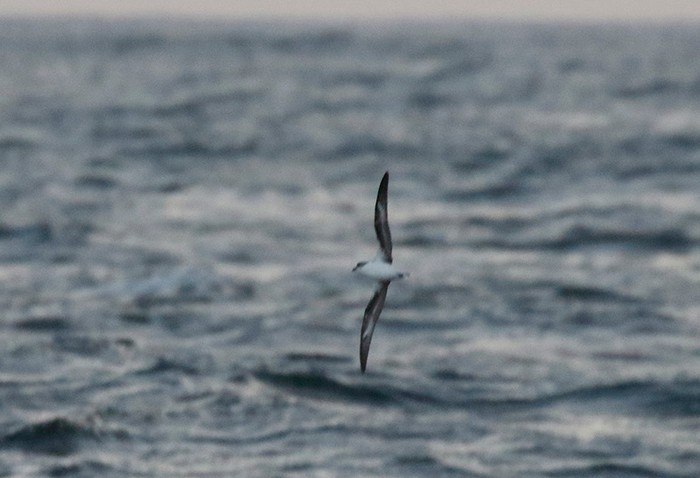
Jon Dunn
24 July 2025
Many thanks to all this week's contributors for your photos and videos
Share

















